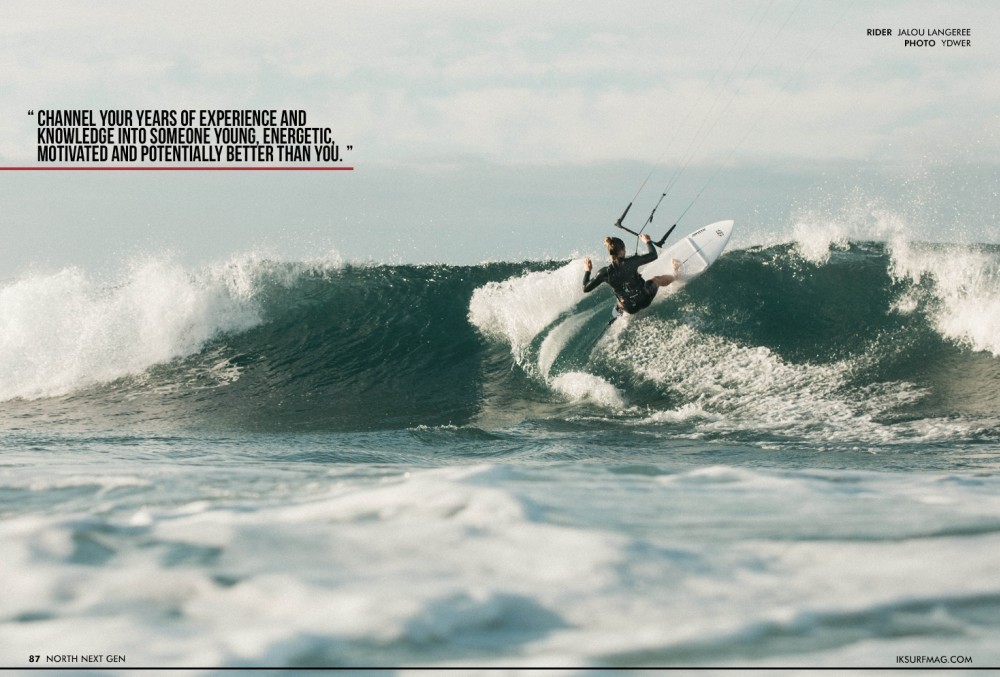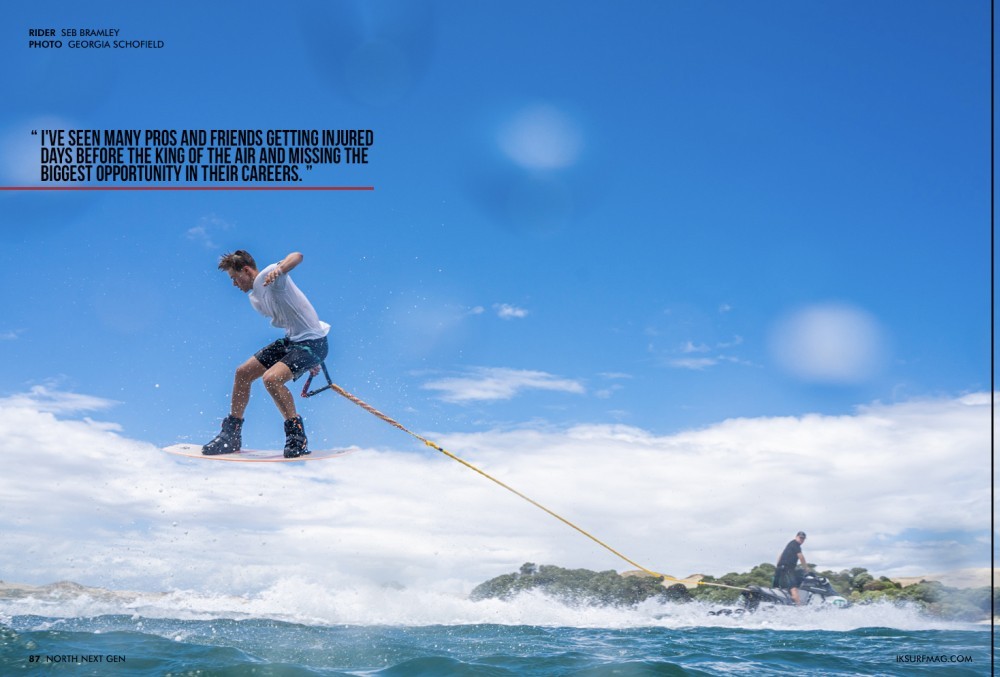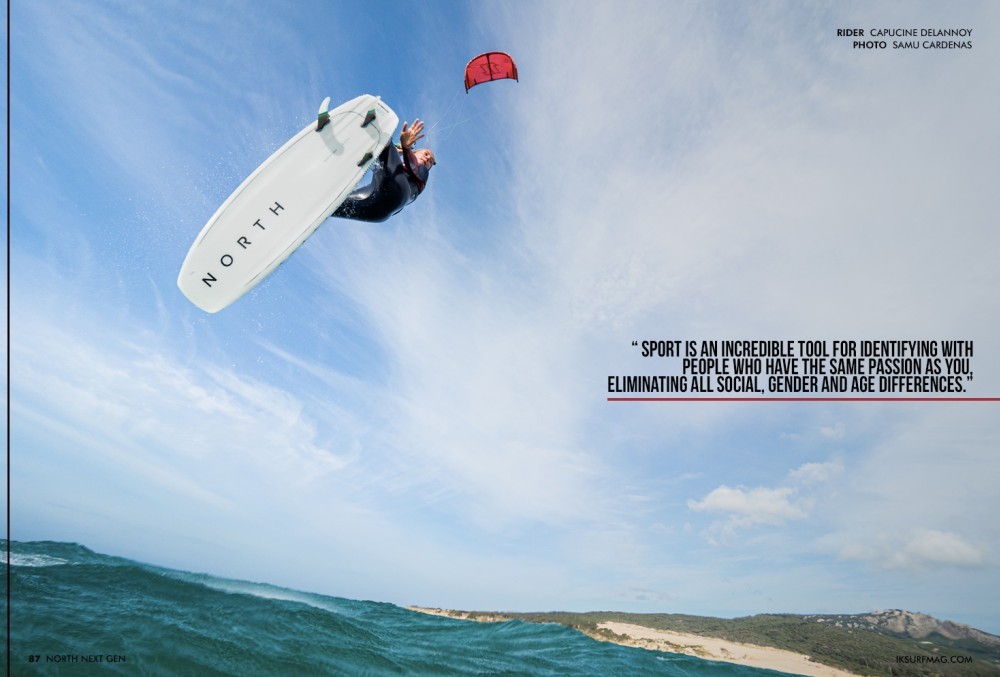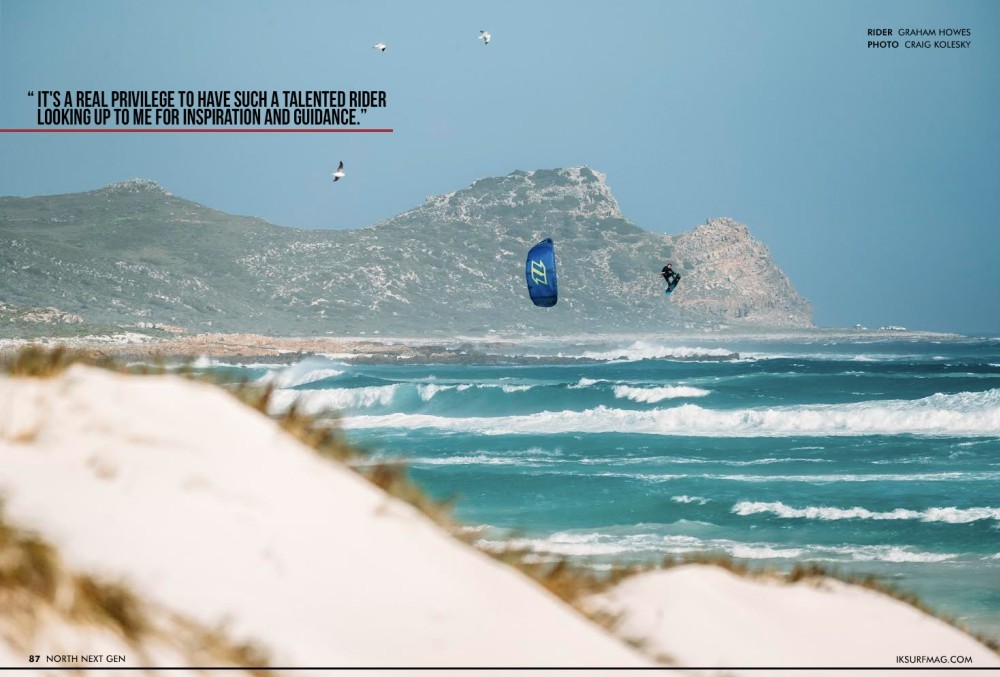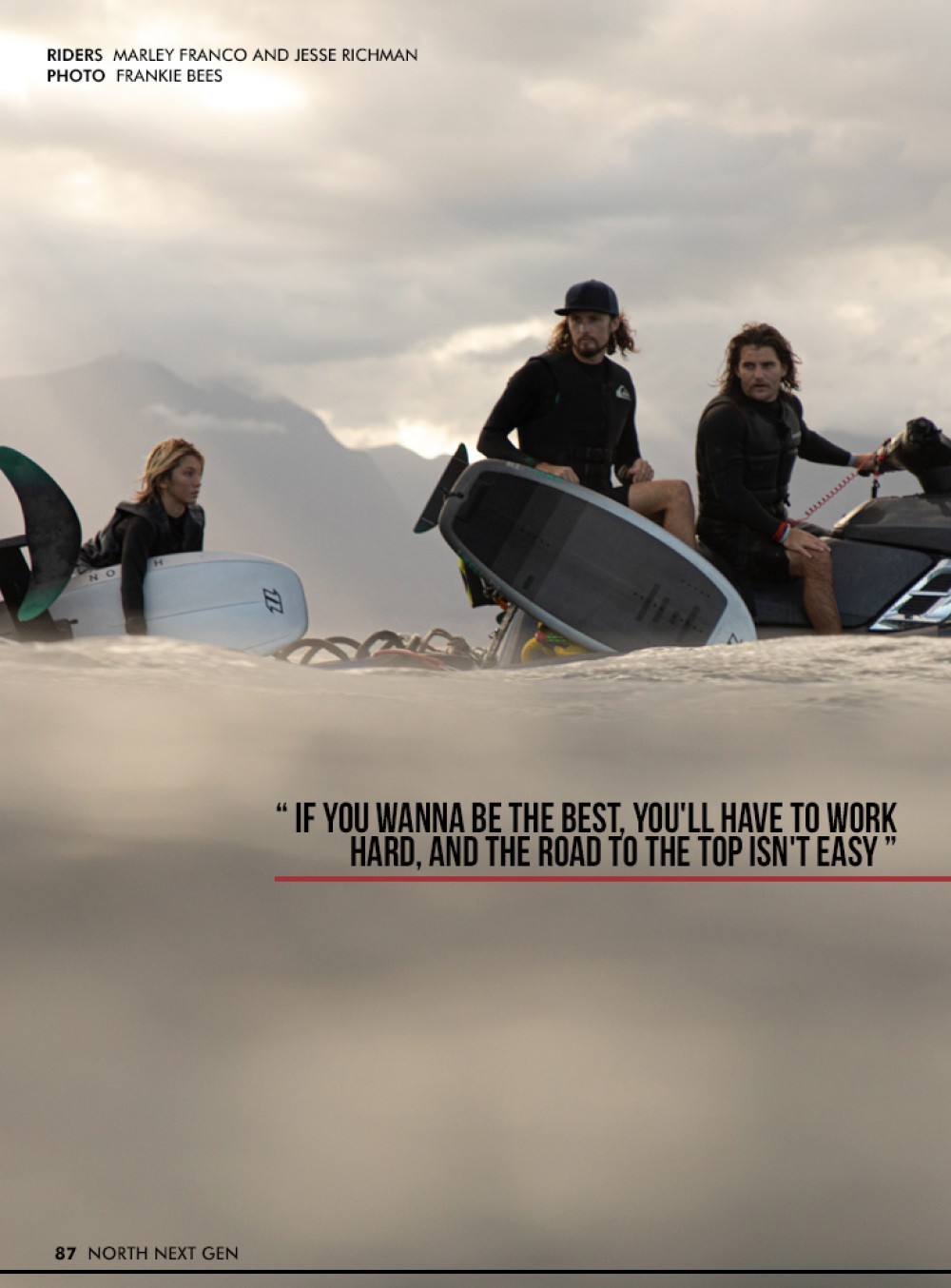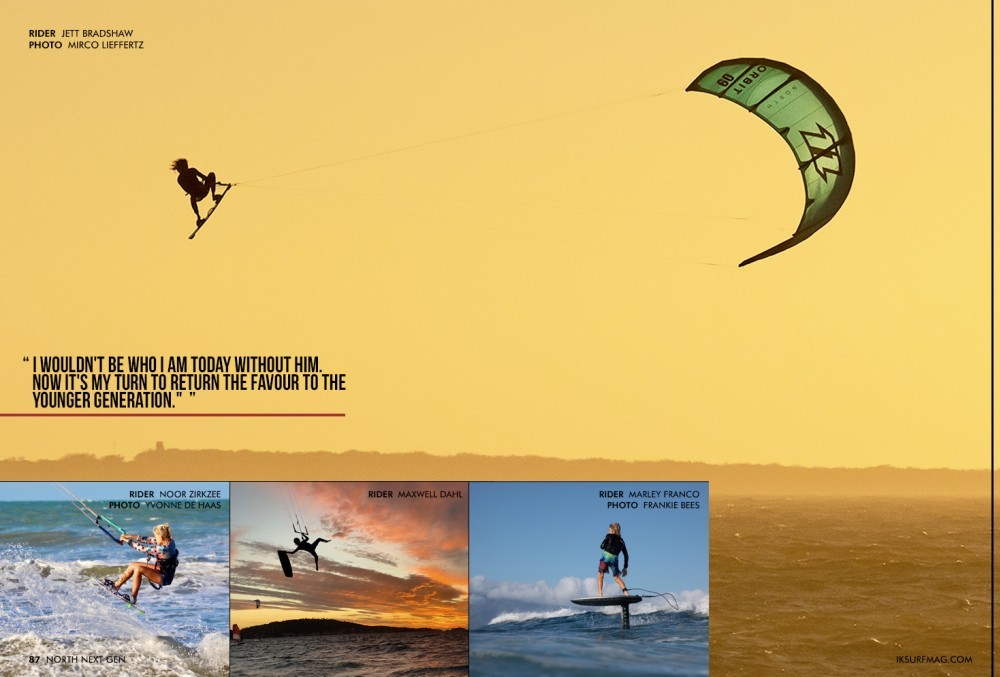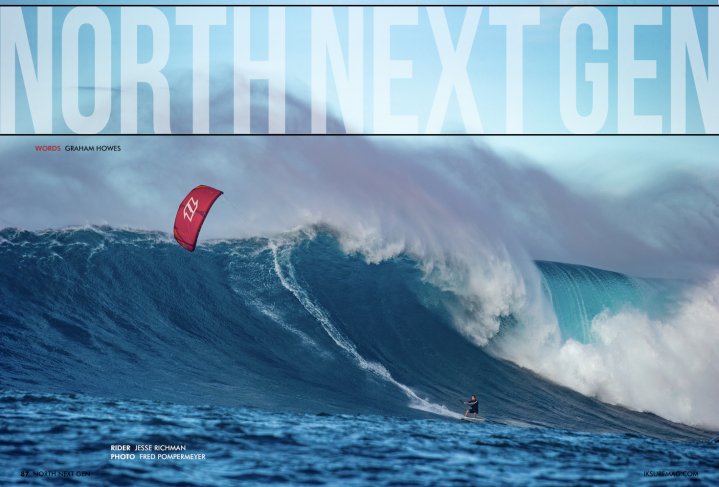
North Next Gen
Issue 87 / Thu 10th Jun, 2021
"The biggest obstacle kiteboarding faces with the next generation is making sure there is one." In this article, Graham Howes introduces North’s Next Gen, and gets philosophical about the future of kiteboarding and how we can all play our part in ensuring there is one. Click here to see what the future has in store!
I've always been forward-thinking. It's not always a good thing... always thinking or worrying about what's next, but I can't help wondering, what IS next? I thrive off progress and growth, and although it's good to look at yourself in those aspects, the truth is that the answer very much lies in the future generation.
Discovering young Jett Bradshaw - riding with him, taking him on photoshoots, and ultimately getting him signed as a North International Team Rider, sparked something in me. Ikigai (a Japanese Philosophy): That which gives your life a sense of purpose; The reason for living.
For me, the thought of inspiring future generations would be one of the greatest achievements possible. It cannot be achieved by being selfish. Once you let go of your ego, it's possible to see the positive effect you can have on the people who look up to you. And this is important in life, not just a kiteboarding career.
Being a professional kiteboarder is quite a lonely journey and maybe even a little selfish at times. At the end of the day, you are trying to be 'The Best' at all costs. For some, that means keeping a lot of what you are trying to achieve a secret until you achieve it. For example, learning a new trick, kiting a new spot or getting a unique shot. But imagine if you could change that mindset and channel your years of experience and knowledge into someone young, energetic, motivated and potentially better than you.
It's a hard pill to swallow, but we won't be at the top of our game forever. Being a pro kiter has a very limited lifespan, basically as long as your body/knees can hold up. This time, however, can be drastically increased if you do it smartly. Unfortunately, we all learn the hard way, and when we are young, we think we have to ride at 120% ("Full Send", as Jett likes to call it) every time we are on the water. But that is not sustainable. I only ride in "Full Send" mode if there's a camera rolling or I'm competing in a heat. 100% if I'm training a new trick. 80% on a typical session with the crew, and closer to 50% when the conditions are bad and possibly dangerous. I also ride a lot more conservatively in the weeks leading up to a big shoot or contest. I've seen many pros and friends getting injured days before the King of The Air and missing the biggest opportunity in their careers.
These are just my views and experience, but a road map can make the journey easier. Just look at Jesse Richman. His road map is pretty much a blueprint. He wakes up, eats what his body requires, trains the muscle groups he needs, trains his brain in performance and mental fitness, and then wins KOTA year after year. A young grom may have Jesse's potential but is eating Mars bars and playing video games and just dreaming of being like Jesse one day.
I'm so passionate about this project because I didn't have a role model at key defining moments when I was a grom. And it often led to me making terrible choices. When we are young and naive, we are influenced by our circle of friends and elders. It took a life-changing knee injury and a year on crutches for me to realise that trying to be cool, hardcore and showing off wasn't sustainable.
I would say that community is the most important aspect in sport and in life. Being a 'black sheep' and being ostracised in school showed me the dark side of not being part of a community/tribe. It's tough and has a considerable impact on one's personality development.
Abraham Maslow said the "need for belonging" is one of the essential needs of a human being. This is why I've dedicated my life, with Dirty Habits, to building a 'tribe' for people like me who don't fit into the norm of society. Sport is an incredible tool for identifying with people who have the same passion as you, eliminating all social, gender and age differences. A session with a 14 or 50-year-old produces the same amount of stoke at the end of the day.
The path into kiting is very different all around the world. Certain countries and kite spots have a strong community, but in others, it doesn't exist. The Netherlands, for instance, has amazing communities. With the great beach clubs (and possibly the laws), I'd imagine people join social clubs with familiar faces that make a newbie feel included from the start. Cape Town, not so much. Maybe it's the geography and the fact that we have so many wide open spots that you don't need to ride in a crowded location. Still, we try to offset that by having social events like the annual Dirty Habits Halloween Jam (which from 2021 will be a global event) and movie nights.
The biggest obstacle kiteboarding faces with the next generation is making sure there is one. European communities won't notice it as much, as the starting wage of a student is pretty good. Even as a bartender, you can save up and buy a second-hand kite setup. But in places like South Africa, Brazil, or the Dominican Republic, gear is completely unaffordable, so the sport is off-limits to groms. The World Champions who come out of these countries learn how to kite on borrowed tourist's gear. In 2006, when I was 19 and living in the Dominican Republic, young Luis Cruz would session for half an hour on my kite, then half an hour on a school kite. That's how he worked his way onto the WKL podium.
We need to get gear in these guys hands. That might mean teaching a grom to kite and handing down your old equipment to them, or donating to an organisation supporting this cause, or just picking up the grom who doesn't have a car and taking them for a session. Kiting has sometimes carried the negative connotation of being an old man's sport because only old men can afford the gear. But with brands stepping in, nonprofits supporting, the community growing, and projects like Next Gen, I see a strong future ahead.
North Next Gen is a Team Rider Mentoring Program - each team rider has hand-picked a young athlete to train, mentor and share their years of experience with.
My mentee is Jett Bradshaw (21) from Cape Town. Jett has 'Go Big or Go Home' and 'Full Send or No Send' engraved in his brain; there are no half measures. When we ride together, we constantly push each other. It's a real privilege to have such a talented rider looking up to me for inspiration and guidance. To teach what I've learnt on and off the water - how to make a career out of the sport you love, maintain it, ride smarter, and build a personal brand. It's all stuff I wish someone had taught me.
Nick Jacobsen has teamed up with Maxwell Dahl (10) from Denmark. Max has been kiting for two years, and his goal is to be the youngest competitor at the Red Bull King of the Air. Nick's advice for the next generation is to keep doing what you love. "There will be as many ups as there are downs. But if the passion and love for what you do stays strong, you can achieve amazing things."
Jesse Richman watched his grom Marley Franco (12) grow up like himself on Maui: "Every ounce of Marley's soul is here to have fun doing some crazy shiz on boards. It doesn't matter the vessel; if Marley can shred it, he will." For Jesse, inspiration comes from the next generation. "Every generation we see is stronger, smarter, and better than the last."
Jalou Langeree chose Noor Zirkzee (12) from her local town Noordwijk, and in her grom can see a lot of herself back when she started. Jalou's advice for the next generation is to follow your joy and intuition. "Having fun in what you are doing is the most important. If you wanna be the best, you'll have to work hard, and the road to the top isn't easy - it can be a bumpy ride. But if you're driven by passion and commitment, you can reach any goal."
Marc Jacobs mentors Seb Bramley (15) from Auckland, New Zealand. "Seb has natural talent. We wakeboard at Rixen cable park in Auckland but close up shop and go kiting when the wind picks up. Seb always seemed keen to give it ago, so one day I decided to teach him. I'm excited to see how far he wants to push it and progress." Marc had a great mentor himself in Dave Edwards. "I wouldn't be who I am today without him. Now it's my turn to return the favour to the younger generation."
Camille Delannoy didn't need to look far to find his grom - sister and world champion strapless freestyler Capucine Delannoy (14). "In my opinion (and I'm not just saying this because she is my sister), she is the most talented strapless freestyle girl out there today." Capucine loves sharing her passion with her brother - and getting away with dropping in on his waves. "When we ride together, I feel that it helps me to push my limits more and more."
Having young blood in the sport is fantastic. The energy and progression the youth bring to the table are unmatched (besides the energy of Jesse, haha). Their joints are flexible, their minds are open and like sponges, and their knees are fresh! As industry leaders, we are responsible for helping them flourish.
Click here to find out more about the North Next Gen.
Videos
By Graham Howes




